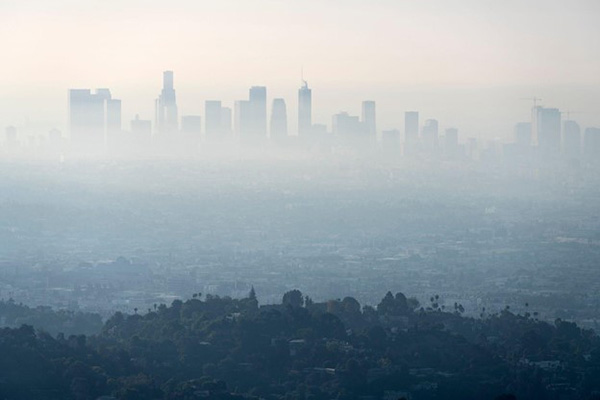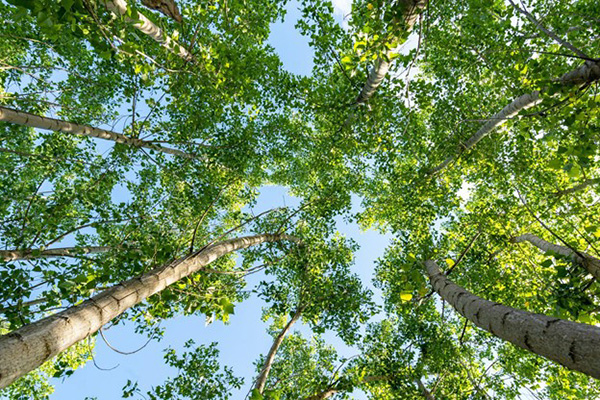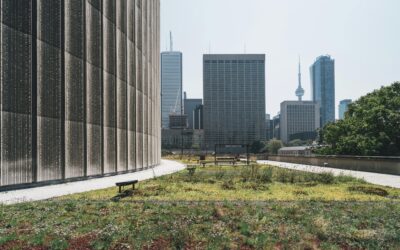While the concern with air pollution may seem relatively novel to some people, it’s been considered a threat to human health since about 400 BCE. But as industrialization took hold worldwide, pollution levels soared, resulting in many health issues for humans, animals, and plants.
In recent decades, humans have become more aware of air pollution and climate change and have tried to slow and even reverse both. While we’ve made strides in these efforts, we still need to do more work to help preserve our world.
Below, we look at air pollution and climate change to see just how they’re correlated as well as pollution’s impact on humans, plants, and animals.
How Does Air Pollution Affect Our Climate?
Air pollutants have a broad-reaching impact on our climate, but it’s not always the same impact. Some can make the climate warmer, while others can make it cooler, according to the Environmental Protection Agency (EPA). This can lead to some confusion. Let’s review how the various pollutants impact the climate and what larger-scale effect this can have on the world.
Pollutants Can Cause the Climate to Warm
Most people hear about how air pollutants can cause global warming, which means they cause the global temperature to rise, leading to warmer climates worldwide. Greenhouse gases (GHGs), such as carbon dioxide or nitrogen oxide, are among the pollutants responsible for this warming effect.
GHGs naturally occur in the Earth’s atmosphere and help regulate the temperature so our planet is habitable. However, since the early 1900s, the GHG levels in the atmosphere have steadily risen due to fossil fuel burning in automobiles, factories, power plants, agriculture, and more. Wildfire smoke also contributes to GHG emission levels.
These GHGs are causing warming in the Arctic regions, and when you warm these regions too much, the abundant snow and ice there can melt in the spring and summer months. This not only drastically changes the ecosystems in the Arctic regions but also can dramatically change the Earth’s surface and lead to even more warming.
The burning of fossil fuels also releases fine particulate matter into the atmosphere, known as aerosols. While aerosols all act differently and have varying effects on the global climate, one form of particle pollution known as black carbon or soot absorbs the sun’s heat and warms the atmosphere.
Pollutants Can Cause the Climate to Cool
As mentioned above, aerosols don’t all act the same, and some actually cool the Earth’s surface by reflecting the sun’s rays. They also aid in cloud production, so the more aerosols in the atmosphere, the higher the potential for cloudy, sunlight-blocking skies. This can result in an overall cooling effect.
These aerosols occur naturally in the atmosphere due to volcano eruptions, sea spray, and other events, but they also come from fossil fuel emissions.
It’s easy to assume that the cooling effect of aerosols could offset the warming effect of GHGs, but that’s not the case. The fact is, GHGs can remain in the atmosphere far longer than aerosols can, meaning their warming effect is longer-lasting, resulting in a net increase in global temperatures.
Simulations and models show these fine particles cause about half as much cooling as GHGs cause warming.
Does Air Pollution Worsen Climate Change?
Yes, high air pollution levels worsen our changing climate — specifically, excessive greenhouse gas emissions into the atmosphere from human activities, such as cars, factories, power plants, and more. These GHGs remain in high concentrations in the atmosphere for decades or even centuries, steadily increasing the amount of heat retained on the Earth’s surface.
As we continue emitting these GHGs, the impact of air pollution can be even higher global temperatures and more snow and ice melting in the Arctic regions. This can lead to a wide range of worldwide issues that we’ll cover below.
What Are the Main Effects of Air Pollution on Humans?
Air pollution has many effects on top of the impacts of climate change that we all witness today. Let’s review the main effects of air pollutants on humans.
Health Impact
Outdoor air pollution, such as smog or ground-level ozone, has various long- and short-term negative health effects on humans. Sensitive groups — such as children, the elderly, and those with existing illnesses — are particularly susceptible to these health risks.
Short-term exposure to poor air quality, especially in crowded cities like New York or San Francisco, can result in mild symptoms, including:
- Coughing
- Wheezing
- Eye, nose and throat irritation
- Headaches
- Dizziness
- Fatigue
While these can go away on their own by getting into an area with clean air, the long-term impacts are far more serious. These long-term public health impacts include:
- Respiratory diseases like asthma or COPD
- Cardiovascular harm
- Heart attacks
- Harm to the liver, spleen, and blood
- Damage to the nervous system
- Lung cancer and other cancers
- Birth defects
- Premature death
Food Production Impact
Air pollution can also impact food production and lead to scarcity of certain staple foods. Among the most sensitive crops to ground-level ozone are soybeans, wheat, potatoes, rice, and corn. A study showed ozone created an estimated 6% to 16% decrease in soy, a 7% to 12% decrease in wheat, and a 3% to 5% decrease in corn.
On a grander scale, this could eventually result in food shortages and leave many people in the world struggling to find sufficient food. With acute food insecurity affecting 135 million to 345 million people worldwide and 49 million people being near famine, this is not something the world can afford to ignore.
What Are the Main Effects of Air Pollution on the Environment?
Air pollution and climate change’s potential impact on humans is alarming, but there is also significant environmental risk associated with air pollution — ranging from harm to wildlife to extreme weather conditions, such as flooding and powerful hurricanes. Let’s explore these environmental risks.
Harms Animals and Plant Life
Like humans, plants and animals can experience severe harm from air pollution and climate change.
Animals can experience many of the same physical ailments as humans when exposed to harmful air pollution like smog, soot, and other particles. Similarly, when enduring short-term exposure, their symptoms can include:
- Wheezing
- Eye, nose and throat irritation
- Headaches
- Dizziness
- Fatigue
Long-term exposure can cause lung disease and cardiovascular damage and disease, harm to internal organs, and cancer — just like in humans.
Plants also suffer from excessive air pollution, as long-term exposure to airborne toxins can lead to reduced growth. Ozone pollution damages plants’ stomata, which are what allow the plants to essentially breathe the air around them.
Air pollution can also lead to reduced sunlight from the smog and heavy cloud coverage, preventing plants from performing photosynthesis and further reducing their ability to grow.
Air pollution can also lead to toxins in the soil, such as nitrogen dioxide, gaseous ammonia, and lead, robbing the plants of the nutrients they need. Plus, all these toxins in the soil can run off into the lakes, streams, and other bodies of water and seriously affect fish and other marine animals.
On top of all this, air pollution can negatively impact plant and animal populations, thereby limiting the natural food supplies in the food chain. This can cause worldwide food shortages for animals, leading to lower populations across the entire food chain.
Creates Acid Rain
When you burn fossil fuels, sulfur dioxide and nitrogen oxides are emitted into the atmosphere. When these two mix with the water droplets in the air, they can create extreme weather known as acid rain, which is a mixture of sulfuric and nitric acid. The wind can then carry these acid-rain-filled clouds thousands of miles and dump it on the Earth below.
Acid rain impacts vegetation by damaging it physically and increases the acidity in the water and soil in the area.
On top of damaging plant life, acid rain is also associated with over 500 deaths annually and can dissolve buildings and other structures, causing upward of $5 billion in damage annually.
Harms the Ozone Layer
While the hole in the ozone layer is showing signs of shrinking, it remains a key symptom of air pollution, specifically refrigerants, such as chlorofluorocarbons (CFCs). CFCs contain chlorine atoms that can destroy ozone atoms. In fact, one chlorine atom can destroy thousands of ozone molecules.
The ozone layer blocks the sun’s harmful ultraviolet-B (UVB) radiation. A hole in this layer puts all life on Earth at risk by increasing risk of skin cancer in humans and animals, restricting plant growth, and slowing fish and amphibian growth.
Creates Extreme Weather Conditions
The hole in the ozone layer and GHG emissions retaining more heat at the Earth’s surface also can result in extreme weather conditions. These can include drought, catastrophic storms, extreme heat, and extreme cold. All these conditions can lead to various related issues, such as wildfires, water scarcity, rising sea levels, flooding, and more.
Where Will We Be in 20 to 30 Years?
If we can manage to continue reducing our carbon emissions, experts predict the global temperature will rise 1.5 to 2 degrees Celsius by 2050. This seems low, but keep in mind this is the average. In the sensitive Arctic regions, the temperature will increase by an estimated 5.5 to 8 degrees Celsius, which is far more dramatic and can lead to accelerated melting of snow and ice.
In turn, that will result in increased solar radiation absorption as well as severe ocean conditions and 37% more heatwaves.
Even if we successfully reduce GHG emissions and other air pollution, things will continue to worsen through 2050. That’s the sad truth. We’ll continue seeing more droughts and wildfires, more flooding and extreme weather, more ice cap melting, and rising sea levels.
While that may sound like a gloomy future, the power is still in our hands to slow this change and start the road back to recovery.
Air Pollution and Climate Change Go Hand in Hand
Air pollution generally includes various GHG emissions and aerosols that can impact the ozone layer and the ability for the atmosphere to regulate the global temperature. This leads directly to climate change, meaning air pollution and climate change are correlated. If we focus on air pollution mitigation, we can help fight climate change and keep our planet habitable for generations.
Everyone can do their part, from switching to alternative fuel cars or public transportation to focusing on renewable energy that pulls us away from fossil fuels. We can also further help by funding initiatives that help lower GHG emissions through carbon offsets. These carbon credits fund carbon reduction or carbon sequestering — those focusing on absorbing carbon, such as planting trees — programs and offset your carbon footprint.
Check out the carbon removal products Terrapass offers for both individuals and businesses.
Brought to you by terrapass.com
Featured image:











